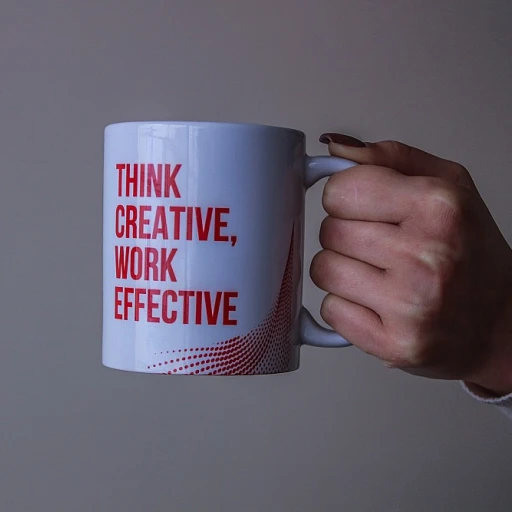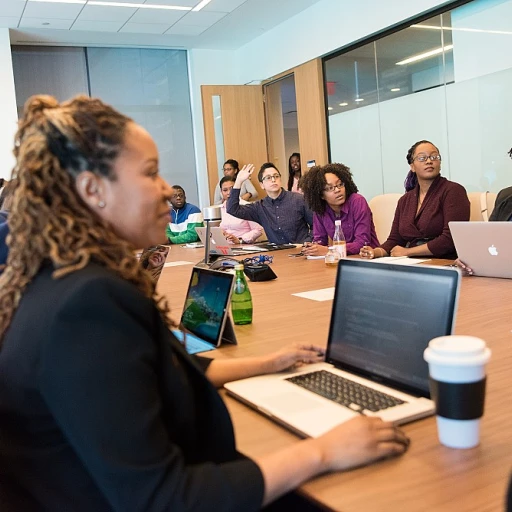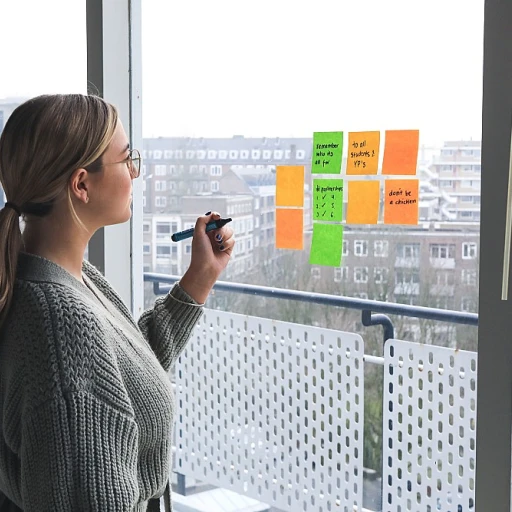
Understanding the Importance of Interview Feedback
The Significance of Constructive Interview Feedback
Providing meaningful interview feedback is a crucial element of an effective hiring process. It not only enhances candidate experience but also serves as a tool for continuous improvement in both candidates and hiring practices. Constructive feedback can markedly improve candidate performance in future interviews, setting them up for success by pinpointing areas of improvement. It's essential for hiring managers to understand that feedback is not just a courtesy—it’s a powerful instrument for improvement. Candidates who receive detailed feedback gain valuable insights into their strengths and areas needing development, especially in terms of skills and communication capabilities. Moreover, giving feedback benefits the company as well. With feedback, companies can refine their interviewing techniques and hiring strategies to attract the best talent available. By focusing on soft skills and problem-solving abilities during the feedback interview, hiring managers are better equipped to assess a candidate's compatibility with the company culture and team dynamics. For these efforts to be effective, it is important for feedback to be both honest and tactful. Providing feedback that is both supportive and constructive helps build a positive relationship with candidates. Unsuccessful candidates who receive this type of feedback are more likely to have a favorable impression of the company, which can help maintain a positive employer brand. Finally, when executed correctly, feedback can lead to a more efficient hiring process by identifying common issues and highlighting best practices. This, in turn, assists in refining the overall approach to future interviews and supporting the development of a more competent and versatile team. For more strategies on enhancing recruitment processes, you can explore this link.Key Elements of Constructive Feedback
Establishing the Foundations of Constructive Feedback
Constructive feedback in interviews plays a pivotal role in enhancing the hiring process and candidate experience. It's not just about highlighting the areas where candidates need improvement, but also reinforcing their strengths and aligning them with the company’s expectations.Precision in Feedback
- Be Specific and Clear: Precision is key when discussing a candidate's interview performance. Avoid vague statements and focus on specific skills and experiences. Use concrete examples to illustrate your points, whether they pertain to problem-solving abilities or communication skills.
- Balanced Approach: A good mix of positive feedback and areas for improvement helps candidates understand their standing without feeling discouraged. This balance is crucial for fostering a positive candidate experience, even for those who are not selected for the role.
Constructive Suggestions for Improvement
Instead of merely pointing out weaknesses, provide candidates with actionable insights for future interviews. This could include enhancing soft skills, such as communication, teamwork, or adapting their approach to better align with the role.Timing and Delivery
Timing can significantly impact how feedback is received. Prompt feedback shows respect for the candidate's time and efforts, helping them gain value from the interview process. It also reflects positively on the company's commitment to candidate engagement and improvement. For further insights on the intricate link between feedback and recruitment strategies, explore this deep dive into HR analytics.Consistency Across the Team
Ensure that all hiring managers and interviewers are aligned in their methods of delivering feedback. Consistency enhances the credibility of the process and ensures that all candidates receive equal treatment, further improving the overall candidate experience.Common Interview Feedback Examples
Practical Feedback Examples for Diverse Scenarios
Providing constructive interview feedback is critical for ensuring candidates have a clear understanding of their performance. Some common examples of feedback highlight various skill areas and experiences throughout the interview process.- Positive Feedback Examples: Acknowledge when a candidate demonstrates excellent communication skills or problem-solving abilities. For instance, you might comment on how their clear explanations streamlined the conversation or praised their innovative approach in addressing hypothetical problems.
- Areas for Improvement: Constructively address where candidates might need development. A candidate who struggled with technical skills during a panel discussion could benefit from feedback suggesting further training or experience in specific software or methodologies relevant to the job role.
- Candidate Experience and Soft Skills: Discuss how candidates integrated with team dynamics during group assessments or displayed leadership potential. Highlight instances where they effectively listened to and incorporated other team members’ ideas, showcasing adaptability and collaboration.
- Role-Specific Performance: Provide feedback on how well candidates understood and articulated the job requirements. For example, you might note how their prior similar experience could enhance their ability to make immediate contributions, yet also mention areas they might explore to align even better with the company’s objectives.
Tools and Techniques for Gathering Feedback
Using Technology for Effective Feedback Collection
In today's fast-paced hiring process, leveraging technology can greatly enhance the way feedback is gathered and provided to candidates. Employing digital tools not only streamlines the process but also ensures that feedback is consistent, timely, and constructive. Here are some key methods that companies can integrate into their interview feedback strategy:
- Automated Feedback Forms: Many companies are now using automated feedback forms to collect input immediately after interviews. These forms can be tailored to assess specific skills and areas for improvement, ensuring that the feedback provided is relevant and comprehensive.
- Interview Feedback Software: Specialized software designed for managing the recruitment process often includes features for compiling interviewer notes and feedback. These tools help in aggregating data, making it easier to track a candidate's performance across different stages of interviews.
- Video Interview Analysis: With the rise of virtual interviews, video analysis tools can evaluate candidates' communication skills and behavioral traits. This technology provides insights into soft skills like problem-solving and teamwork, which are crucial for many roles.
- Collaboration Platforms: Encouraging collaboration among hiring managers and team members through platforms like Slack or Microsoft Teams allows for a seamless exchange of feedback. These platforms facilitate real-time discussions, ensuring that all perspectives are considered before providing constructive feedback to the candidate.
- Feedback Databases: Creating a centralized database for storing feedback enables a structured approach to tracking candidate experiences. Over time, this data can also be invaluable for identifying patterns and areas where your interview process might need improvement.
By integrating these tools and techniques, companies can not only improve the quality of their interview feedback but also ensure a positive experience for candidates. Additionally, these insights can help inform future hiring decisions and drive continuous improvement in recruitment strategies.
Challenges in Delivering Feedback and How to Overcome Them
Overcoming Obstacles in Delivering Feedback
Providing interview feedback can often present multiple challenges for hiring managers and HR professionals. Addressing these obstacles ensures an effective process that benefits both the company and the candidates involved. Here are some common challenges and how they can be overcome:- Time Constraints: The hiring process is typically hurried and packed with various tasks, leaving minimal time for providing detailed feedback. It's important to allocate specific time slots in your schedule for this activity to ensure candidates receive constructive insights tailored to their interview performance.
- Balancing Positive and Constructive Feedback: It can be difficult to find the right balance between highlighting a candidate's strengths and areas for improvement. To avoid this, adopt the feedback sandwich method—start with positive feedback, address areas of improvement, and end with an encouraging note. This approach prevents demoralization and fosters a positive candidate experience.
- Objective Assessment: Subjectivity in feedback can lead to biases. Use structured interview scorecards and specific criteria to evaluate skills and performance. This standardizes communication and provides candidates with a clear understanding of their standing.
- Communication Skills: For some hiring managers, effectively communicating feedback remains a challenge. Training in active listening and communication techniques can enhance the ability to deliver clear, constructive feedback. This not only improves interviewer skills but also strengthens overall team efficacy.
- Receiving Negative Reactions: Candidates may react negatively to feedback, making it difficult to communicate effectively. Prepare to handle these situations by acknowledging the candidate's feelings and reiterating the intention for future improvement, maintaining professionalism throughout the interaction.












